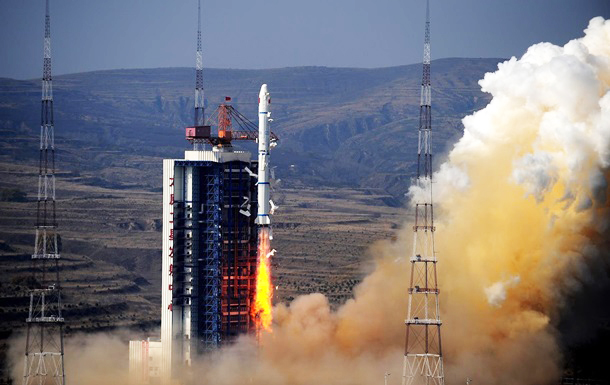The bulk of the rocket was destroyed as it re-entered the atmosphere, but state media reported that debris landed just west of the Maldives on Sunday.
There have been days of speculation over where the rocket might land, and US officials and other experts warned its return risked potential casualties.
But China insisted the risk was low.
The Long March-5b vehicle re-entered the atmosphere at 10:24 Beijing time (02:24 GMT) on Sunday, state media reported, citing the Chinese Manned Space Engineering office. There were no reports of injuries or damage.
It said debris from the 18-tonne rocket, one of the largest items in decades to have an undirected dive into the atmosphere, landed in the Indian Ocean at a point 72.47° East and 2.65° North.
US Space Command, meanwhile, simply said the rocket had "re-entered over the Arabian Peninsula". It did not confirm the landing point reported by Chinese media, saying instead that it was "unknown if the debris [had] impacted land or water".
The monitoring service Space-Track, which uses US military data, said the rocket was recorded above Saudi Arabia before it fell into the Indian Ocean near the Maldives.
***
The wreckage of the last stage of China’s Long March-5B carrier rocket (CZ-5B), which put to the orbit the module of the Chinese station, on Sunday entered the Earth’s atmosphere over the Indian Ocean and the bulk of debris burnt, the China Manned Space Engineering Office stated, AzVision.az reports citing TASS.
"At 10:24 on May 9 the wreckage of the last stage of the Long March 5 B 2 carrier rocket re-entered the Earth’s atmosphere. The falling area is located in the surrounding waters of 72.47°E and 2.65°N. Most of the debris burnt during the re-entry process," the statement said.
On April 29, the China National Space Administration (CNSA) using the Long March-5B carrier rocket put to the orbit the main module of the country’s space station. The launch was successful.
More about: China













-1747837442.jpg&h=190&w=280&zc=1&q=100)


































